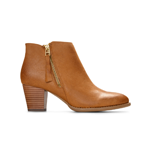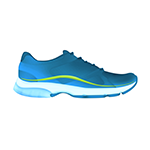
TYPES OF ATHLETIC SHOES
Have you ever been looking for the perfect pair of athletic shoes only to be overwhelmed by the different types of athletic shoes available? You’re not alone! Because there are so many different athletic shoe types, finding the right pair of shoes for your lifestyle and feet can feel like an impossible task, but it doesn’t have to. We’re here to help make sure that you can find the athletic shoes that will be most beneficial for your feet with as little worry and stress as possible. We believe the key to understanding the types of athletic shoes and selecting the right pair is having the proper information to help you make an informed decision. That’s why we’ve done the research for you to make sure you’re equipped with all the information you need to know regarding what to look for in athletic shoes, the different types of athletic shoes available for every foot type, and how to make sure you’re picking high-quality comfortable shoes with the support and infrastructure your feet need.
We want to help you understand and look for the best athletic shoe that fits your lifestyle. And since we have earned a place in the athletic footwear market as a trusted resource with dedicated research teams, shoe stylists, and foot doctors, you never have to choose between style and support. We have exactly what you need. Keep reading as we educate you on the different types of athletic shoes, how to choose the right pair, and our top tips for finding high-quality, supportive, athletic footwear.
 What Types of Athletic Shoes Are Right For Me?
What Types of Athletic Shoes Are Right For Me?
Before you can get to shopping for the perfect lightweight shoe, first let’s review how to make sure you’re choosing the right athletic shoes for your feet and your lifestyle. Below are our top tips to keep in mind as you are choosing your new pair of athletic shoes.
Choosing the Perfect Pair, Made Simple!
When you’re buying new footwear, there are many different factors to consider that will contribute to how comfortable and supportive the shoes you are purchasing will be once you put them to the test. We never want you to be deterred from getting outside and breaking a sweat because your footwear is unsupportive and has left you with achy, sore feet. To help make sure you know what to look for, we’ve compiled a list to check off when choosing the perfect pair of athletic shoes.
-
Make sure you know your feet. Feet
all seem similar structurally, for the most part, right? Ten toes, an arch, a heel, a
pad, but really no two feet are the same and there is no one-size-fits-all approach for
your feet. Before you start searching for your perfect pair of athletic shoes, make sure
to do a wet test to help learn vital information about the unique features of your feet
and how they disperse weight and pressure. To do a wet test, simply wet the bottom of
your foot in water, step on a piece of paper (preferably something darker in color, such
as brown to accentuate the pattern), and when your foot is placed on the paper take a
pencil or pen and do a rough outline of your foot. When you lift your foot back up,
you’ll be able to see what part of your foot show up on the paper, which can be
incredibly useful for figuring out your arch type and what areas of your feet bear the
most pressure as you walk (so you can make sure your sport shoes help to alleviate that
pressure as much as possible).
- High Arches: If you find your footprint only shows a portion of your heel with a portion of your forefoot and a minimal connection between the two (if any connection at all), you have high-arched feet and they are more prone to roll outward as you walk, which is known as underpronation. You can also confirm this theory by looking at a pair of your current athletic shoes: if you have high arch, they will wear more quickly on the outside edge of the shoe. If you have high arches, we recommend looking for athletic shoes that have cushioning and a soft midsole to help absorb the impact of your steps.
- Medium Arches: If your footprint shows a neutral arch with a distinctive curve along the inside, you have feet with a medium arch. Feet with medium arches are considered biomechanically efficient, which is why your shoes most likely wear out uniformly! But just because your feet are biomechanically efficient doesn’t mean you shouldn’t make sure they have the perfect athletic shoes to provide proper cushioning and supportive infrastructure.
- Low Arches (Flat Feet): If your footprint shows your entire foot with little to no curve along the inside, you have feet with low arches, which you may also hear called flat feet. Flat feet are more prone to roll inwards as you walk, which is called overpronation. Overpronation causes you to wear down the inside edge of your shoes more quickly than the outer edge. If you’ve got low arches, it’s important to make sure your workout shoes offer maximum arch support, stability, and are designed to provide motion control as you walk so your overpronation is minimized.
- Unlike human beings, shoes shouldn’t multitask. You may love multitasking during the day to knock out all of your tasks (who doesn’t?), but it’s unreasonable to expect your shoes to be capable of multitasking and providing adequate support across different activities. When you’re looking for athletic shoes, make sure you consider the physical activity you do most frequently and choose your shoes accordingly so that they are providing you with optimal support for the activity you are doing. For example, if you love walking your pup each day, it’s important to select athletic walking shoes that are designed specifically for walking to make sure your feet have the support and stability they need. If you’ve grown used to walking with foot and heel pain, you haven’t walked a mile with Vionic! We want to make sure you can always get out and do what you love without the soreness and pain the next day.
- Remember that your feet change. Remember when you were a little kid and it felt like you constantly needed new shoes because your feet were growing and changing? While that process slows as you age, your feet continue to change as you get older. For some, that may mean that your feet grow a half size as you age. For others, that may mean that feet with high arches have collapsed and are now relatively flat, which requires different support. Make sure to continuously reevaluate what is right for your feet to make sure your feet are adequately supported.
- Try on shoes with the socks you’ll wear frequently. The type of sock you wear can affect how different shoes feel on your feet, which is why it’s important to try on athletic shoes with the socks you’ll wear the most frequently on your feet. You want to make sure the shoes fit perfectly with your socks. If you have orthotics, it’s also important to bring those when trying on athletic shoes. With Vionic, you never have to lug around shoe insoles because each of our shoes have podiatrist-designed orthotic support built-in.
- Always leave ⅜ to ½ inch of space between the front of your big toe and the end of the shoe. When you were little, did your parents check to see if your shoes fit properly by placing their thumb in the space between your big toe and the end of the shoe? There’s a reason for that! Your thumb is an easy way to replicate the ideal space that should be left between your toes and the end of your shoes to make sure your foot fits in the shoes properly. If your shoes fit correctly, your toes should not be slammed into the end of your shoe, nor should your heel be slipping out as you walk.
- Know when you need a new pair (and replace them promptly). Once you’ve found a pair of athletic shoes you love, we know it can be tough to part with them, but it’s important to replace athletic shoes when they wear out to make sure your feet are receiving the support they need. Once your shoes are worn out, your shoes will begin to feel less supportive and more uncomfortable after working out, which can lead to aches, pains, and foot issues. To prevent this, make sure you replace your shoes once they start to look and feel worn out, which will be after approximately 350-400 miles worth of use.
Now that you’re an expert in what to look for to find the perfect pair of athletic shoes, let’s dive into some of the most common types of athletic shoes.
Breaking Down the Types of Athletic Shoes
The athletic footwear market is large, with a handful to choose from. There are many different types of shoes available for every physical activity to make sure your footwear is working to your benefit as much as possible. At Vionic, we believe that when you are equipped with the knowledge, you can choose the perfect pair of athletic shoes to make you look and feel great! To help you narrow down what athletic shoes are right for you, we’ve broken down common types of athletic shoes below.
Casual Sneakers
Casual sneakers have long been classic athletic shoes because of their simple style and functionality. If you want athletic and supportive shoes that can transition easily from brunch with friends to a walk around the neighborhood, invest in a stylish pair of women’s casual sneakers with the supportive infrastructure built-in.
Work Out Shoes
Do you love breaking a sweat to destress? Power walks can be a beneficial workout for your health, but it can also be hard on your feet because of the impact on the ground. To make sure your feet stay healthy and supported, your running shoes should be designed for forward motion with a significant amount of cushioning built-in to absorb the shock of the impact of each step. The proper supportive infrastructure in your active sneakers can help prevent a number of issues, such as tendinitis, shin splints, stress fractures, and plantar fasciitis, to name a few.
Walking Shoes
If you love walking around the neighborhood and on pathways, you’ll want to wear supportive athletic walking shoes. Walking shoes are often designed to be lightweight to make sure you can move easily without feeling weighed down. In addition, we recommend making sure your walking shoes have built-in shock absorption, particularly in the heel and ball of your foot, to make sure your weight transitions smoothly from heel to toe without residual pain the next day. Walking shoes will also be more firm in the front than running shoes to make sure you can more easily roll on your toes, rather than bending like you would in a running shoe. Not sure you need walking shoes? Check out our top reasons you should make time for walking.
Find High-Quality Supportive Footwear with Vionic
If you’re looking for high-quality, supportive footwear, it’s important to invest in athletic shoes that are made by a company who has built their business on marrying stylish design with a podiatrist-designed supportive infrastructure to make sure you never have to choose between style and support. At Vionic, we believe you can have it all and we are passionate about delivering athletic shoes designed with high-quality materials, a timeless, simplistic style, and possess the supportive infrastructure your feet need to take you anywhere you want to go.










